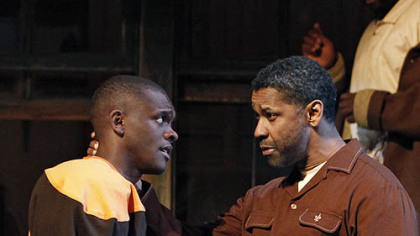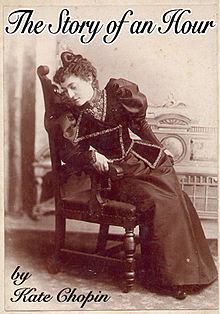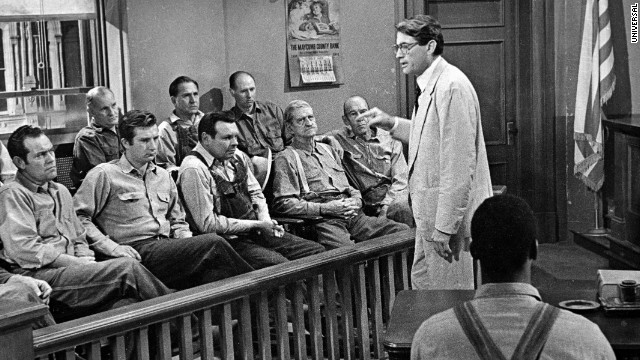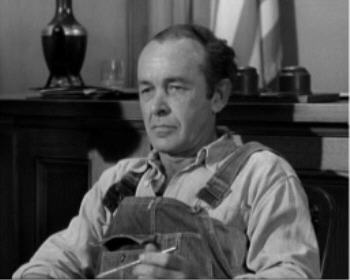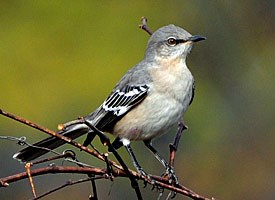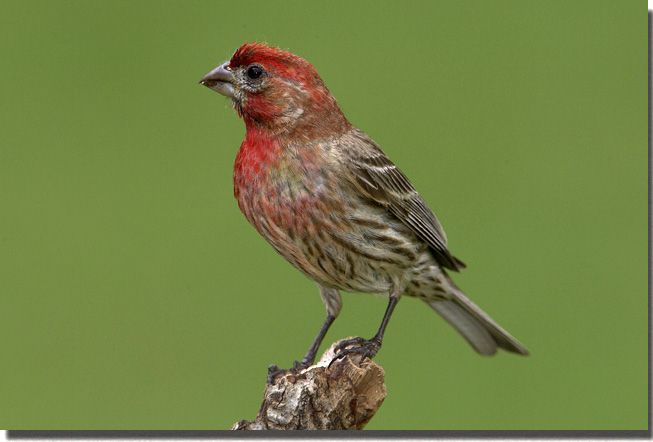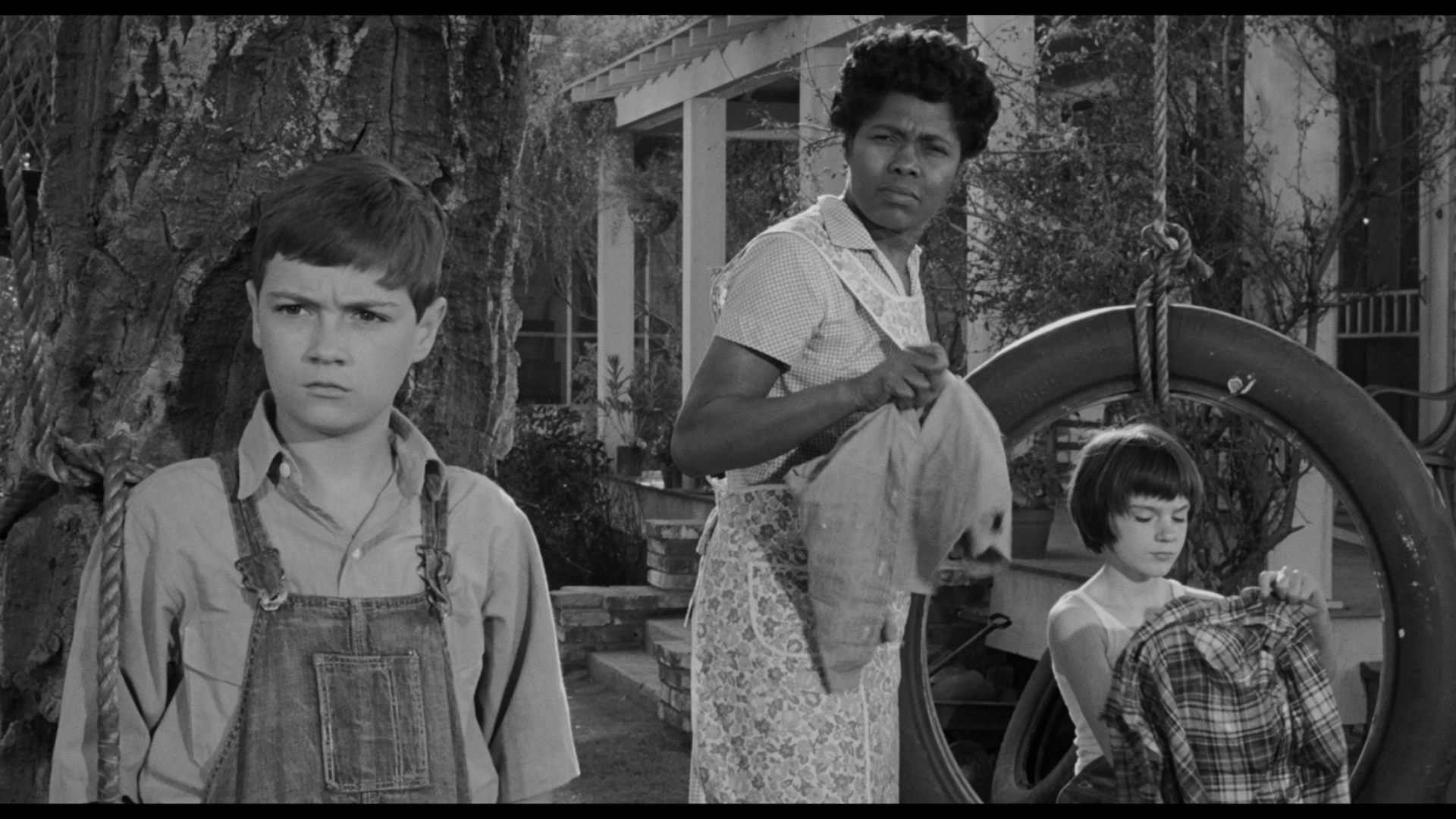Do Now:
Classwork: It is 2 weeks later and a Friday night:
1. Is Troy disrespecting Rose? Why this change in the way he talks to her?
2. Why is it ironic that Troy won his case and will drive the truck?
3. Why won't Troy take the money from Lyons?
4. How does Rose continue her role as peacemaker and keeping Troy in line?
Add inferences you can make about Troy now as well as the quotes that prove them to your graphic organizer.
Welcome to our class blog! Check this site every day - especially if you have been absent.
Monday, June 2, 2014
Thursday, May 29, 2014
Friday, May 30, 2014
Do Now: What do you think of Lyons? Why?
Classwork: .
Graphic Organizer. Use your notes and the book to find quotes that prove your inferences
Act 1: Scene 2 -
Troy is in a foul mood at the start of this scene:
The numbers,
The restaurant man
Cory
Meet Gabriel:
Classwork: .
Graphic Organizer. Use your notes and the book to find quotes that prove your inferences
Act 1: Scene 2 -
Troy is in a foul mood at the start of this scene:
The numbers,
The restaurant man
Cory
Meet Gabriel:
Meet Cory:
What are the issues between father and son?
Homework: Review your graphic organizers as you begin to study for the final.
Tuesday, May 27, 2014
Wednesday, May 28, 2014
Do Now: Based on the first scene of Act 1, what can you infer about Troy?
Classwork:
Explore Troy's attitude toward shopping at Bella's, his tendency to exaggerate wit the Devil stories, and his reaction to Cory's recruitment.
http://www.broadway.com/videos/151292/show-clips-fences-starring-denzel-washington/
Analyze them in terms of their conversation. What inferences can you make based on evidence from the play?
Meet Rose:
Why does she marry Troy? What types of reactions does she have to Bella's, the devil stories, and Lyons?
Homework:Continue filling out your graphic organizers.
Classwork:
Explore Troy's attitude toward shopping at Bella's, his tendency to exaggerate wit the Devil stories, and his reaction to Cory's recruitment.
http://www.broadway.com/videos/151292/show-clips-fences-starring-denzel-washington/
Analyze them in terms of their conversation. What inferences can you make based on evidence from the play?
Meet Rose:
Why does she marry Troy? What types of reactions does she have to Bella's, the devil stories, and Lyons?
Homework:Continue filling out your graphic organizers.
Thursday, May 22, 2014
Friday, May 23, 2014
Do Now: Based on the Introduction to Fences, what have you learned about Troy Maxson? ( 5 lines, 5 minutes)
Classwork:
1. The setting
2. August Wilson's introduction to the play:
Contrast the life style and opportunities of European immigrants with that of the descendants of African slaves.
Why does the author call this period the time before "the hot winds of change?
Why does he include information about the World Series in this historical perspective?
3. Meet Troy and Bono:
http://www.broadway.com/videos/151292/show-clips-fences-starring-denzel-washington/
Analyze them in terms of their conversation. What inferences can you make based on evidence from the play?
Homework: Character Analysis: Summarize the conversation between Troy and Bono. What have you learned about each man?
Classwork:
1. The setting
2. August Wilson's introduction to the play:
Contrast the life style and opportunities of European immigrants with that of the descendants of African slaves.
Why does the author call this period the time before "the hot winds of change?
Why does he include information about the World Series in this historical perspective?
3. Meet Troy and Bono:
http://www.broadway.com/videos/151292/show-clips-fences-starring-denzel-washington/
Analyze them in terms of their conversation. What inferences can you make based on evidence from the play?
Homework: Character Analysis: Summarize the conversation between Troy and Bono. What have you learned about each man?
Tuesday, May 6, 2014
Wednesday, May 7, 2014
Do Now: Create a first line for the following CRQ:
“Identify the mood in the passage from Joseph Conrad's novel The Heart of Darkness. Use at least four specific examples and details from the text to support your answer.”
What is mood?
Classwork:
CRQ opening lines :
1. “What conclusions can you draw about population growth in Country X from the data presented in the chart?” Use evidence from the chart to support your answer.
2, Describe the tone of the excerpt and explain how the author creates it. Support your answer with two relevant and specific examples from the excerpt.
What is tone?
3. Based on the excerpt, explain the methods researchers use to study cold viruses. Support your answer with relevant and specific information from the excerpt.
Literary Terms Review:
Figurative Language
Simile, Metaphor, Hyperbole, Personification, Imagery
Characterization:
Direct and Indirect , Motivation
Conflict
Internal and External
Plot, Setting, Theme, Tone, Mood
Homework: Quiz tomorrow.
“Identify the mood in the passage from Joseph Conrad's novel The Heart of Darkness. Use at least four specific examples and details from the text to support your answer.”
What is mood?
Classwork:
CRQ opening lines :
1. “What conclusions can you draw about population growth in Country X from the data presented in the chart?” Use evidence from the chart to support your answer.
2, Describe the tone of the excerpt and explain how the author creates it. Support your answer with two relevant and specific examples from the excerpt.
What is tone?
3. Based on the excerpt, explain the methods researchers use to study cold viruses. Support your answer with relevant and specific information from the excerpt.
Literary Terms Review:
Figurative Language
Simile, Metaphor, Hyperbole, Personification, Imagery
Characterization:
Direct and Indirect , Motivation
Conflict
Internal and External
Plot, Setting, Theme, Tone, Mood
Homework: Quiz tomorrow.
Wednesday, April 30, 2014
Thursday, May, 1, 2014
Do Now: What are at least five steps you will use to attack this passage before answering the Multiple Choice questions?
Classwork: Claw Lock
Follow the steps you've listed.
Answer the MC questions
Answer the CRQ: Based on the excerpt, describe the process of escalation that occurs in a conflict between two lobsters. Support your answer with three relevant and specific examples from the excerpt.
Classwork: Claw Lock
Follow the steps you've listed.
Answer the MC questions
Answer the CRQ: Based on the excerpt, describe the process of escalation that occurs in a conflict between two lobsters. Support your answer with three relevant and specific examples from the excerpt.
Wednesday, April 23, 2014
Thursday, April 24, 2014
Do Now: Why is it important to look at titles, headings, and subheadings of charts, maps, and graphs? Write your answer on page 87.
Classwork: Measuring Up Workbook
1. Census Bureau Data - charts and maps
Annotate the visual data.
Familiarize yourself with the type of information in each visual.
Annotate the questions and answer them without guessing!
Homework: Answer the CRQ.
Classwork: Measuring Up Workbook
1. Census Bureau Data - charts and maps
Annotate the visual data.
Familiarize yourself with the type of information in each visual.
Annotate the questions and answer them without guessing!
Homework: Answer the CRQ.
Tuesday, April 22, 2014
Wednesday, April 23, 2014
Do Now: What 3 categories of information can you access from this bar graph?
Classwork: Reading Visual Information
The focus is on charts, graphs, maps, forms, and web pages.
Tips for using the visuals to improve comprehension.
Homework: Review the handouts.
Classwork: Reading Visual Information
The focus is on charts, graphs, maps, forms, and web pages.
Tips for using the visuals to improve comprehension.
Homework: Review the handouts.
Sunday, April 20, 2014
Monday, April 21, 2014
Do Now: How many word parts are in the word DEHUMANIZATION? What do they mean? What does the word probably mean?
Classwork: It's all about context clues and word parts:
1. Context clues - 4 types
Definition
Synonym
Antonym
Inference
2. Word part practice
Homework: Study for test tomorrow.
Classwork: It's all about context clues and word parts:
1. Context clues - 4 types
Definition
Synonym
Antonym
Inference
2. Word part practice
Homework: Study for test tomorrow.
Tuesday, April 15, 2014
Wednesday, April 16, 2014
Do now: What do the following suffixes mean?
ial, ess, ish, ity, ist, tion, ward
What do the following words probably mean:
merciless biologist regeneration beneficial
Classwork: Roosevelt Speech to Congress
Multiple Choice question check and CRQ rough draft.
Homework: Study for suffix test tomorrow!
ial, ess, ish, ity, ist, tion, ward
What do the following words probably mean:
merciless biologist regeneration beneficial
Classwork: Roosevelt Speech to Congress
Multiple Choice question check and CRQ rough draft.
Homework: Study for suffix test tomorrow!
Wednesday, April 9, 2014
Tuesday, April 15, 2014
Do Now: Based on your knowledge of roots,suffixes, and prefixes, what do you think the following words mean?
spectacle
irresponsible
jurisdiction
sentimental
Classwork: Propaganda and fact/opinion differentiation
Check answers Franklin D. Roosevelt: War Message to Congress
Apply test-taking strategies.
Homework: Answer the CRQ
spectacle
irresponsible
jurisdiction
sentimental
Classwork: Propaganda and fact/opinion differentiation
Check answers Franklin D. Roosevelt: War Message to Congress
Apply test-taking strategies.
Homework: Answer the CRQ
Tuesday, April 8, 2014
Wednesday, April 9, 2014
Do Now: Why do you think so many commercials are filled with repeated words and phrases?
Classwork:
Propaganda techniques continued:
Read and annotate the Pit Bull editorial for examples of propaganda techniques.
Answer thr Multiple Choice questions.
Homework: Answer the CRQ for this article.
Classwork:
Propaganda techniques continued:
Read and annotate the Pit Bull editorial for examples of propaganda techniques.
Answer thr Multiple Choice questions.
Homework: Answer the CRQ for this article.
Monday, April 7, 2014
Tuesday, April 8, 2014
Do Now: “Pit
bulls are the canine equivalent of assault weapons.” This is an
example of bad logic. Why? Can you extend the problem beyond “pit
bulls”?
Today's class centers on the use of propaganda techniques in informational text.
We'll be focusing on :
Today's class centers on the use of propaganda techniques in informational text.
We'll be focusing on :
Name Calling
Euphemisms
"Bandwagon"
Loaded words
Testimonial
Stereotyping
Red Herring
Homework: Answer all questions for this article.
Read the editorial to analyze the author's use of biased reasoning
Tuesday, April 1, 2014
Thursday, April 3, 2014
Do Now: Write the definition of "metaphor" and create an example.
Classwork: Today you will work independently to complete a sample Keystone test passage. You will be reading a poem, answering Multiple Choice questions and answering a CRQ.
"Goldfinches" by Mary Oliver
These images should help you identify the metaphors in the poem.
Thistles - the coins of reddish fire:
Classwork: Today you will work independently to complete a sample Keystone test passage. You will be reading a poem, answering Multiple Choice questions and answering a CRQ.
"Goldfinches" by Mary Oliver
These images should help you identify the metaphors in the poem.
Thistles - the coins of reddish fire:
The hatchlings wake in the swaying branches, in the silver baskets,
Homework: Study your handouts for tomorrow's sample Keystone test on fiction and poetry.
Monday, March 31, 2014
Tuesday, April 1, 2014
Do Now: What would it be like to live here -
when this might happen? Be specific.
"Negotiations With a Volcano"
Analysis of irony, figurative language, tone, and additional poetic devices.
Homework: Answer the Multiple Choice question and the CRQ.
when this might happen? Be specific.
"Negotiations With a Volcano"
Analysis of irony, figurative language, tone, and additional poetic devices.
Homework: Answer the Multiple Choice question and the CRQ.
Wednesday, March 26, 2014
Thursday, March 27, 2014
Do Now: Why does the poet describe the path of Pearl Avenue in the first verse of the poem?
Classwork: Poetry
"Ex-Basketball Player"
Explain the last verse of the poem: Why theses images?
Multiple Choice Questions
Constructed Response following the Tips for Success format.
"Negotiations with a Volcano"
Consider the title of the poem. Why is it ironic?
Homework: Read "Negotiations..." and answer the Multiple Choice questions.
Classwork: Poetry
"Ex-Basketball Player"
Explain the last verse of the poem: Why theses images?
Multiple Choice Questions
Constructed Response following the Tips for Success format.
"Negotiations with a Volcano"
Consider the title of the poem. Why is it ironic?
Homework: Read "Negotiations..." and answer the Multiple Choice questions.
Tuesday, March 25, 2014
Wednesday, March 26, 2014
Do Now: Where do you see yourself 10 years from now. Job? family? Be specific.
Classwork: Poetry
Review poetic elements
"Ex-Basketball Player" - John Updyke
The focus is on imagery and figurative language.
What is the poet's tone. How do you know?
What is the theme of this poem?
Homework: Answer reading questions. Handout check tomorrow
Classwork: Poetry
Review poetic elements
"Ex-Basketball Player" - John Updyke
The focus is on imagery and figurative language.
What is the poet's tone. How do you know?
What is the theme of this poem?
Homework: Answer reading questions. Handout check tomorrow
Monday, March 24, 2014
Do Now:Explain the author's use of irony in "The Story of an Hour". Is there any evidence of foreshadowing in earlier parts of the story? If so, when?
Classwork: Fiction
The Story of an Hour
1. Check your answers to the Multiple Choice questions with your group. Everyone must agree.
2. Constructed Response question.
Annotate the question.
Follow the 7 step format in your handout:
1. How will you turn the prompt into an opening sentence?
2. What evidence will you use from the story to support your answer.
3. Be sure to explain what the evidence proves.
Plan your answer briefly. Answer the question.
Homework: Handout check tomorrow!
Classwork: Fiction
The Story of an Hour
1. Check your answers to the Multiple Choice questions with your group. Everyone must agree.
2. Constructed Response question.
Annotate the question.
Follow the 7 step format in your handout:
1. How will you turn the prompt into an opening sentence?
2. What evidence will you use from the story to support your answer.
3. Be sure to explain what the evidence proves.
Plan your answer briefly. Answer the question.
Homework: Handout check tomorrow!
Saturday, March 22, 2014
Monday, March 24, 2014
Do Now: Why does the author describe what Mrs. Mallard sees from her window? What message is the author sending through tone?
Classwork: The Story of an Hour, continued.
1. Focus on the shifts in plot, characterization, and tone in the last half of the story.
2. Answer reading questions.
3. Answer Multiple Choice questions.
Homework: Review your notes on tone in this story to answer tomorrow's CRQ.
Classwork: The Story of an Hour, continued.
1. Focus on the shifts in plot, characterization, and tone in the last half of the story.
2. Answer reading questions.
3. Answer Multiple Choice questions.
Homework: Review your notes on tone in this story to answer tomorrow's CRQ.
Thursday, March 20, 2014
Friday, March 21, 2014
Do Now:What is the difference between saying someone has "heart trouble" or "heart disease"? Why?
Classwork: The Story of an Hour
What can you infer about this woman from the picture?
We will be analyzing tone, setting, characterization, and theme.
The close reading questions are geared to illuminating
syntax,
indirect characterization,
irony,
and author's purpose.
Homework: Be sure your handout is annotated, and questions are answered for the sections we've covered in class.
Classwork: The Story of an Hour
What can you infer about this woman from the picture?
We will be analyzing tone, setting, characterization, and theme.
The close reading questions are geared to illuminating
syntax,
indirect characterization,
irony,
and author's purpose.
Homework: Be sure your handout is annotated, and questions are answered for the sections we've covered in class.
Tuesday, March 18, 2014
Wednesday, March 19, 2014
Do Now: Analyze Mary Maloney as she puts a plan in place. Consider motivation and indirect characterization.
Classwork:
Test-taking Strategies:
Multiple Choice Questions:
1. Annotate the question
2. Do not read answers until after you have read the text.
3. Mark the sections of the text that questions refer to.
4. After reading the text:
Eliminate wrong answers and distracters
Look for answers with similar wording. One of them is probably right.
Re-read the text to confirm your choice.
Homework: Answer the CRQ for this section.
Classwork:
Test-taking Strategies:
Multiple Choice Questions:
1. Annotate the question
2. Do not read answers until after you have read the text.
3. Mark the sections of the text that questions refer to.
4. After reading the text:
Eliminate wrong answers and distracters
Look for answers with similar wording. One of them is probably right.
Re-read the text to confirm your choice.
Homework: Answer the CRQ for this section.
Sunday, March 16, 2014
Monday, March 17, 2014
Do Now: Describe your favorite room including how it looks at a specific
time of day. Think about the words you will use to express your
attitude about this room. Set a mood for your reader.
Classwork: KEYSTONE EXAM FOCUS: Fiction
Review of terms: theme, characterization, mood, tone, conflict, foreshadowing, plot...
"Lamb to the Slaughter" by Roald Dahl
1. How does the setting of this room convey the author's tone, mood?
2. Concentrate on inferences and characterization as you read the first two excerpts.
3. What can you infer about Mrs. Maloney? Mr. Maloney? Why?
Homework: Answer reading questions forr these excerpts.
Thursday, March 13, 2014
Friday, March 14, 2014
Do Now: Why doesn't Heck Tate want it known that Boo Radley killed Bob Ewell? (At least two reasons, please.)
Classwork: Final scene - To Kill A Mockingbird
1. How have Scout and Jem learned each of the life lessons of this novel?
2. How does learning these lessons change their views of Maycomb, Boo, Tom Robinson, Atticus, or themselves?
3. Symbolism in the novel.
4. Introduction to the wiki project.
Homework: Begin working on your project. Your rough draft is due Tuesday!
Classwork: Final scene - To Kill A Mockingbird
1. How have Scout and Jem learned each of the life lessons of this novel?
2. How does learning these lessons change their views of Maycomb, Boo, Tom Robinson, Atticus, or themselves?
3. Symbolism in the novel.
4. Introduction to the wiki project.
Homework: Begin working on your project. Your rough draft is due Tuesday!
Wednesday, March 12, 2014
Thursday, March 13, 2014
Do Now: A mockingbird is a symbol in this novel. Explain the symbol. Who are the mockingbirds in the novel? Why?
Classwork:
We will be taking a close look at Atticus and Sheriff Tate by considering:
1. Blind spots
2. Internal and External conflict
3. Indirect characterization.
Homework: Read the Themes and Symbolism sections of your handout.
Classwork:
We will be taking a close look at Atticus and Sheriff Tate by considering:
1. Blind spots
2. Internal and External conflict
3. Indirect characterization.
Homework: Read the Themes and Symbolism sections of your handout.
Monday, March 10, 2014
Tuesday, March 11, 2014
Do Now: Why is Bob Ewell furious after the trial? ( 5 lines, 5 minutes)
Classwork:
Analyze Bob Ewell in terms of the three unusual things that occurred after the trial.
Why does he attack the three people involved?
How does the town put him in his place?
Homework: Test tomorrow!
Classwork:
Analyze Bob Ewell in terms of the three unusual things that occurred after the trial.
Why does he attack the three people involved?
How does the town put him in his place?
Homework: Test tomorrow!
Sunday, March 9, 2014
Monday, March 10, 2014
Do Now:Read The Verdict section of your handout. What evidence is there that Atticus might have accomplished his original goal?
Classwork: To Kill A Mockingbird
Analyze the reactions to the verdict:
1. What can you infer about Atticus, Jem, and Bob Ewell based on the explicit text in these excerpts?
Analyze the aftermath of the trial:
1. Tom Robinson's death
2. Mr. Deas' editorial
3. Theme: the title revisited
Homework: Read and paraphrase the three unusual thins that occurred in Maycomb as the town returns to normal. Use the margins for paraphrasing.
Test Wednesday!
Classwork: To Kill A Mockingbird
Analyze the reactions to the verdict:
1. What can you infer about Atticus, Jem, and Bob Ewell based on the explicit text in these excerpts?
Analyze the aftermath of the trial:
1. Tom Robinson's death
2. Mr. Deas' editorial
3. Theme: the title revisited
Homework: Read and paraphrase the three unusual thins that occurred in Maycomb as the town returns to normal. Use the margins for paraphrasing.
Test Wednesday!
Thursday, March 6, 2014
Friday, March 7, 2014
Do Now: Why does Atticus know he will lose this trial? Given this fact, what is his purpose in his closing argument?
Classwork: To Kill A Mockingbird
How does he try to persuade this jury in this time and place?
1. Analyze each of the arguments he presents to the jury.
2. How do they support his purpose?
3. Does he include logical, emotional, and ethical appeals
4. What does he say explicitly? Why does he choose this strategy?
Homework: Read The Verdict section of your handout.
Classwork: To Kill A Mockingbird
How does he try to persuade this jury in this time and place?
1. Analyze each of the arguments he presents to the jury.
2. How do they support his purpose?
3. Does he include logical, emotional, and ethical appeals
4. What does he say explicitly? Why does he choose this strategy?
Homework: Read The Verdict section of your handout.
Wednesday, March 5, 2014
Thursday, March 6, 2014
Do Now: Were you impressed by Atticus's argument to the jury? Why? Which part stands out for you?
Classwork: A closer look at his closing argument:
1. Rhetorical Appeals - logical, ethical, and emotional
Definition of Terms - Power Point
Click the link above to open the PowerPoint
Homework: Re-read the closing argument to identify examples of each type of persuasive appeal.
Classwork: A closer look at his closing argument:
1. Rhetorical Appeals - logical, ethical, and emotional
Definition of Terms - Power Point
Click the link above to open the PowerPoint
Homework: Re-read the closing argument to identify examples of each type of persuasive appeal.
Wednesday, March 5, 2014
Do Now: What piece of evidence that Atticus presented in the trial was the most powerful? Why?
Classwork:
1. The conclusion of the trial of Tom Robinson. Analyze Atticus' speech to the jury - movie and novel.
2. The end result of the trial.
3. Does Atticus accomplish his primary goal for defending Tom? Use evidence from the text to support your opinion.
Homework: Read Excerpt 1 on your handout and answer the reading question. Be sure to use evidence that supports your opinion.
Classwork:
1. The conclusion of the trial of Tom Robinson. Analyze Atticus' speech to the jury - movie and novel.
2. The end result of the trial.
3. Does Atticus accomplish his primary goal for defending Tom? Use evidence from the text to support your opinion.
Homework: Read Excerpt 1 on your handout and answer the reading question. Be sure to use evidence that supports your opinion.
Sunday, March 2, 2014
Monday, March 3m 2014
Do Now: What have you learned from Mayella's body language about her testimony as well as her character? Be specific by using examples. ( 5 lines 5 minutes)
Classwork: To Kill A Mockingbird
1. Tom Robinson testifies and makes a huge mistake in this 1930's Southern culture.
2. Atticus address the jury to appeal to their basic humanity.
Analyze the persuasive appeals he uses.
Does he accomplish his original goal?
Homework: Your time line will be graded tomorrow,
Classwork: To Kill A Mockingbird
1. Tom Robinson testifies and makes a huge mistake in this 1930's Southern culture.
2. Atticus address the jury to appeal to their basic humanity.
Analyze the persuasive appeals he uses.
Does he accomplish his original goal?
Homework: Your time line will be graded tomorrow,
Thursday, February 27, 2014
Friday. February 28, 2014
Do Now: Prefix Test - Review your handout.
Classwork: To Kill A Mockingbird
Compare/contrast Mayella's testimony in the movie vs. the book.
Consider what is omitted as well as what you learn from body language.
Atticus calls Tom Robinson to testify. - Movie versus novel.
Homework: Enjoy the weekend.
Classwork: To Kill A Mockingbird
Compare/contrast Mayella's testimony in the movie vs. the book.
Consider what is omitted as well as what you learn from body language.
Atticus calls Tom Robinson to testify. - Movie versus novel.
Homework: Enjoy the weekend.
Tuesday, February 25, 2014
Wednesday, February 26, 2014
Do Now: Review for Prefix test.
Classwork: The trial continued
Bob Ewell's testimony:
1. Evidence
2. characterization
Mayella Ewell's testimony
1. the events from her perspective
2. characterization
Homework: Continue creating your timeline of the trial proceedings.
Classwork: The trial continued
Bob Ewell's testimony:
1. Evidence
2. characterization
Mayella Ewell's testimony
1. the events from her perspective
2. characterization
Homework: Continue creating your timeline of the trial proceedings.
Monday, February 24, 2014
Tuesday, February 24, 2014
Do Now: CRQ - Analyze the author's tone in the Ewell property excerpt. Include
three pieces of evidence from the text that support your opinion.
Classwork: To Kill A Mockingbird - The Trial
Create a time line of evidence that is revealed as Atticus questions each witness.
1. Sheriff Heck Tate describes the situation and charges.
2. Bob Ewell takes the stand:
Analyze his behavior and personality traits as he is questioned.
3. Summarize the loopholes in the case against Tom Robinson to this point.
Homework: Analyze the character of Atticus Finch and Bob Ewell in the courtroom.
Classwork: To Kill A Mockingbird - The Trial
Create a time line of evidence that is revealed as Atticus questions each witness.
1. Sheriff Heck Tate describes the situation and charges.
2. Bob Ewell takes the stand:
Analyze his behavior and personality traits as he is questioned.
3. Summarize the loopholes in the case against Tom Robinson to this point.
Homework: Analyze the character of Atticus Finch and Bob Ewell in the courtroom.
Sunday, February 23, 2014
Monday, February 23, 2014
Do Now: Review the description of the Ewell's property and life-style on your handouts.
Classwork: Close reading of this excerpt.
1. Which descriptions of the property are the most vivid?
2. Identify the author's tone as she describes the Ewell family and their activities.
3. CRQ: Analyze the author's tone in this excerpt. Include three pieces of evidence from the text that support your opinion.
Homework: Complete Handout 5 for grading tomorrow.
Prefix quiz.
Classwork: Close reading of this excerpt.
1. Which descriptions of the property are the most vivid?
2. Identify the author's tone as she describes the Ewell family and their activities.
3. CRQ: Analyze the author's tone in this excerpt. Include three pieces of evidence from the text that support your opinion.
Homework: Complete Handout 5 for grading tomorrow.
Prefix quiz.
Wednesday, February 19, 2014
Thursday, February 20, 2014
Do Now: Prefix quiz - Review your handouts.
Classwork:
1. Review for test tomorrow.
2. Review Constructed Response Questions format and tips for success.
3. Sample CRQ.
Classwork:
1. Review for test tomorrow.
2. Review Constructed Response Questions format and tips for success.
3. Sample CRQ.
How does racial prejudice
impact the black community as well as the white community in Maycomb? Include three pieces of evidence from the text that support your answer.
Homework: Test tomorrow!
Thursday, February 13, 2014
Friday, February 14, 2014
Do Now: Review your Roots handout for test.
Classwork: Handout 5: To Kill A Mockingbird
1. How does Calpurnia handle racial prejudice among the Black community? Why does Harper Lee include this episode?
2. Aunt Alexandra symbolizes the ideals of Southern womanhood in the 1930's. Explain how she might 'cross swords' with Calpurnia .
Homework: Answer reading questions for these sections and read excerpt 4.
Classwork: Handout 5: To Kill A Mockingbird
1. How does Calpurnia handle racial prejudice among the Black community? Why does Harper Lee include this episode?
2. Aunt Alexandra symbolizes the ideals of Southern womanhood in the 1930's. Explain how she might 'cross swords' with Calpurnia .
Homework: Answer reading questions for these sections and read excerpt 4.
Sunday, February 9, 2014
Monday, February 10,2014
Do Now: Uncle Jack buys Jem and Scout air-rifles for Christmas. Atticus warns them that
it is a sin to kill a mockingbird. Read Miss Maudie's explanation to help
you figure out why.
Classwork: Symbolism in the novel
1.Bird references:
Predict why Harper Lee chose this title.
The Finch family:
2. Guns
3. Chapter 10 involves both of these symbols as well as the recurring motif of good versus evil:
Jem's view of Atticus
Atticus' perspective on guns
Tim Johnson episode
Homework: Annotate and answer reading questions for the sections we have covered in class. Review your Roots handout for a quiz tomorrow.
Classwork: Symbolism in the novel
1.Bird references:
Predict why Harper Lee chose this title.
The Finch family:
2. Guns
3. Chapter 10 involves both of these symbols as well as the recurring motif of good versus evil:
Jem's view of Atticus
Atticus' perspective on guns
Tim Johnson episode
Homework: Annotate and answer reading questions for the sections we have covered in class. Review your Roots handout for a quiz tomorrow.
Wednesday, February 5, 2014
Thursday, February 6, 2014
Do Now: Why does Nathan Radley say he cemented the knothole in the tree? Why do you think he cemented the hole? Support your opinion with evidence from the text.
Classwork:
1. Compare Scout and Jem's reactions to the plugging up of the knot-hole.
2. Take a closer look at Atticus Finch - Chapter 10:
Scout defends her father against racist remarks.Classwork:
1. Compare Scout and Jem's reactions to the plugging up of the knot-hole.
2. Take a closer look at Atticus Finch - Chapter 10:
Why is he defending Tom Robinson?
Why is he concerned about Scout?
Homework: Finish all reading questions for Chapter 9
Sunday, February 2, 2014
Monday, February 3, 2014
Do Now: List the things that Jem and Scout find in the tree on the Radley property?
Classwork: Boo becomes a three-dimensional character in these chapters.
We will be analyzing additional evidence from the novel that sheds more light on Boo.
Chapter 4
1. Gifts in the tree.
2. The tire incident
3. Miss Maudie's interpretation of Boo.
Try walking in Boo's shoes:
1. How do the carved figures in the knothole illuminate Boo's character?
2. There are several more gifts left for Jem and Scout. What do they tell you about Boo?
3. Create a brief biography explaining Boo's life before and after the Cunningham incident.
Homework: Finish all reading questions for today's excerpts. Be sure to include evidence from the text in your answers!
Wednesday, January 29, 2014
Thursday, January 30, 2014
Do Now: Calpurnia says: "...
don’t you let me catch you remarkin’ on their ways like you was so high
and mighty!" What does she mean? Why does she say it?
Classwork: Miss Caroline continues to misunderstand her students with the Burris episode.
Is there evidence of internal/ external conflict in this episode? Use evidence from the text to prove your point.
What significant information have you learned about the Cunningham's, the Burris family, and the Finch family? How can you use this information to infer 'social class' in this town?
What have you learned about Maycomb in the 1930's?
Explain Atticus' perspective on Scout's first day at school.
Homework: Test tomorrow - all handouts on TKAM are included.
Classwork: Miss Caroline continues to misunderstand her students with the Burris episode.
Is there evidence of internal/ external conflict in this episode? Use evidence from the text to prove your point.
What significant information have you learned about the Cunningham's, the Burris family, and the Finch family? How can you use this information to infer 'social class' in this town?
What have you learned about Maycomb in the 1930's?
Explain Atticus' perspective on Scout's first day at school.
Homework: Test tomorrow - all handouts on TKAM are included.
Monday, January 27, 2014
Tuesday, January 28, 2014
Do Now: Which part of the Boo Radley Legend do you find the most outrageous? Why?
Classwork: Our focus is on Scout's experiences in first grade.
Four episodes we'll analyze for characterization:
Miss Caroline deals poorly with Scout's ability to read.
Miss Caroline has no knowledge of who her students are.
Miss Caroline embarrasses Walter Cunningham.
Scout embarrasses Walter as well.
What can you infer about Miss Caroline's teaching ability? Prove your point with evidence from the text.
What can you infer about Scout by the way she reacts to Miss Caroline and Walter? Prove your point with evidence from the text.
Homework: Test Chapter 1 and 2 Friday. Be prepared to answer a CRQ.
Classwork: Our focus is on Scout's experiences in first grade.
Four episodes we'll analyze for characterization:
Miss Caroline deals poorly with Scout's ability to read.
Miss Caroline has no knowledge of who her students are.
Miss Caroline embarrasses Walter Cunningham.
Scout embarrasses Walter as well.
What can you infer about Miss Caroline's teaching ability? Prove your point with evidence from the text.
What can you infer about Scout by the way she reacts to Miss Caroline and Walter? Prove your point with evidence from the text.
Homework: Test Chapter 1 and 2 Friday. Be prepared to answer a CRQ.
Saturday, January 25, 2014
Monday, January 27, 2014
Do Now: Harper Lee wrote that "A baseball hit into the Radley yard was a lost ball and no
questions asked." What does the sentence mean? What can you infer based on this sentence?
"The misery of the Radley house"
The legend of Boo Radley
Homework: Finish reading and annotating excerpts 3B and 3C. Answer all reading questions including the chart.
Wednesday, January 22, 2014
Thursday, January 23, 2014
Do Now: You've read the Jim Crow excerpt. What parts stand out for you? Why?
Classwork: To Kill A Mockingbird:
1. The Historical Connection
2. Chapter 1:
The setting: Maycomb, Alabama 1930
Meet the characters: Jem Finch, Scout Finch, Atticus Finch, Calpurnia, Dill, Boo Radley and family.
Analyze the legend of Boo Radley: Why is the story called a "legend"?
Homework: Answer the reading questions that we have covered in class.
Classwork: To Kill A Mockingbird:
1. The Historical Connection
2. Chapter 1:
The setting: Maycomb, Alabama 1930
Meet the characters: Jem Finch, Scout Finch, Atticus Finch, Calpurnia, Dill, Boo Radley and family.
Analyze the legend of Boo Radley: Why is the story called a "legend"?
Homework: Answer the reading questions that we have covered in class.
Monday, January 20, 2014
Tuesday, January 20, 2014
Do Now: What can you imagine life must have been like for a black teenager in Alabama in 1930? (5 lines/5 minutes)
Classwork: Today we start To Kill A Mockingbird by Harper Lee!
Read
1. "The Author's Connection on your handout.
.Underline events in the author's life and in the novel that are similar.
2. Summarize them briefly in the margin.
3. Read the Historical Connection focusing on The Great Depression and four key facts
Homework: Read and follow the annotation directions for "The Jim Crow South".
Classwork: Today we start To Kill A Mockingbird by Harper Lee!
Read
1. "The Author's Connection on your handout.
.Underline events in the author's life and in the novel that are similar.
2. Summarize them briefly in the margin.
3. Read the Historical Connection focusing on The Great Depression and four key facts
Homework: Read and follow the annotation directions for "The Jim Crow South".
Thursday, January 16, 2014
Thursday, January 16, 2014
Do Now: Explain one thing you have learned in school that has made life easier or more difficult for you.
Classwork: Independent Reading: "Shame" - Dick Gregory ( p. 288)
1. Read the first 3 paragraphs of the essay to identify the context and tone.
Finish the essay comparing the shift in tone from the introduction to the conclusion.
Answer reading questions.
2. How does Gregory use language to help the reader understand the magnitude of this episode?
3. Read Beginnings and Endings ( page 145 ) in the text to gather ideas for the introduction and conclusion of your narrative essay.
4. Using Shame as a guide, begin to create the body of your essay.
Homework: Your essay is due tomorrow. Wiki project!
Classwork: Independent Reading: "Shame" - Dick Gregory ( p. 288)
1. Read the first 3 paragraphs of the essay to identify the context and tone.
Finish the essay comparing the shift in tone from the introduction to the conclusion.
Answer reading questions.
2. How does Gregory use language to help the reader understand the magnitude of this episode?
3. Read Beginnings and Endings ( page 145 ) in the text to gather ideas for the introduction and conclusion of your narrative essay.
4. Using Shame as a guide, begin to create the body of your essay.
Homework: Your essay is due tomorrow. Wiki project!
Wednesday, January 15, 2014
Wednesday, January 15, 2014
Do Now: Review your notes for today's test.
Classwork:
1. Test - Cultural Values
2. "The Barrio" - Ramirez
Read the first four paragraphs. Describe the setting. What is the mood? What is the author's tone?
Continue reading looking for additional descriptions, evidence of tone, and figurative language.
Homework:
Classwork:
1. Test - Cultural Values
2. "The Barrio" - Ramirez
Read the first four paragraphs. Describe the setting. What is the mood? What is the author's tone?
Continue reading looking for additional descriptions, evidence of tone, and figurative language.
Homework:
Monday, January 6, 2014
Tuesday, January 7, 2014
Do Now: Prepare for laptops by putting the rough draft of your poem on your desk>
Classwork: Wiki project - directions
Open Safari.
Go to http://mrswillisenglish3.pbworks.com and log in
Your user name is your firstnamelastname
Password is your student number.
Create a page and title with your initials Poem
Create your poem following the guidelines on your handout.
Once you are satisfied with the format and your images, click spell check and proofread.
The last step is to download a picture from the Internet that enhances your poem.
Homework: This project will be graded Wednesday evening!
Classwork: Wiki project - directions
Open Safari.
Go to http://mrswillisenglish3.pbworks.com and log in
Your user name is your firstnamelastname
Password is your student number.
Create a page and title with your initials Poem
Create your poem following the guidelines on your handout.
Once you are satisfied with the format and your images, click spell check and proofread.
The last step is to download a picture from the Internet that enhances your poem.
Homework: This project will be graded Wednesday evening!
Saturday, January 4, 2014
Monday, January 6, 2014
Do Now: WHICH IS WHICH? (Metaphor, Simile, Personification, Alliteration, or Hyperbole) Just write the word, not the sentence.
1. Trying to figure out persuasive appeals drives me insane.
2. Tyranny terrifies too many teenagers tormented by terrible abuse.
3. The gentle waves kissed the the child's feet at the beach.
4. The hoodie was a soft as a puppy's fur.
5. I felt she was a wild tiger when she lost her temper in the hall between classes.
Classwork: "Sympathy" Paul Lawrence Dunbar
1. Trying to figure out persuasive appeals drives me insane.
2. Tyranny terrifies too many teenagers tormented by terrible abuse.
3. The gentle waves kissed the the child's feet at the beach.
4. The hoodie was a soft as a puppy's fur.
5. I felt she was a wild tiger when she lost her temper in the hall between classes.
Classwork: "Sympathy" Paul Lawrence Dunbar
1. Underline
imagery.
2. Circle
figurative language examples and identify in margin.
3. Summarize each stanza in the margin.
4. What is the
extended metaphor in this poem?
5. What is the tone? How do you know? Use evidence from the text.
6. What is the theme? How does it relate to "Same Song" and "The Legend"
Writers' Workshop - Review wiki assignment due tomorrow!
Homework: You must be prepared with your poem. No draft, no laptop! This is a one day assignment!
Subscribe to:
Comments (Atom)

